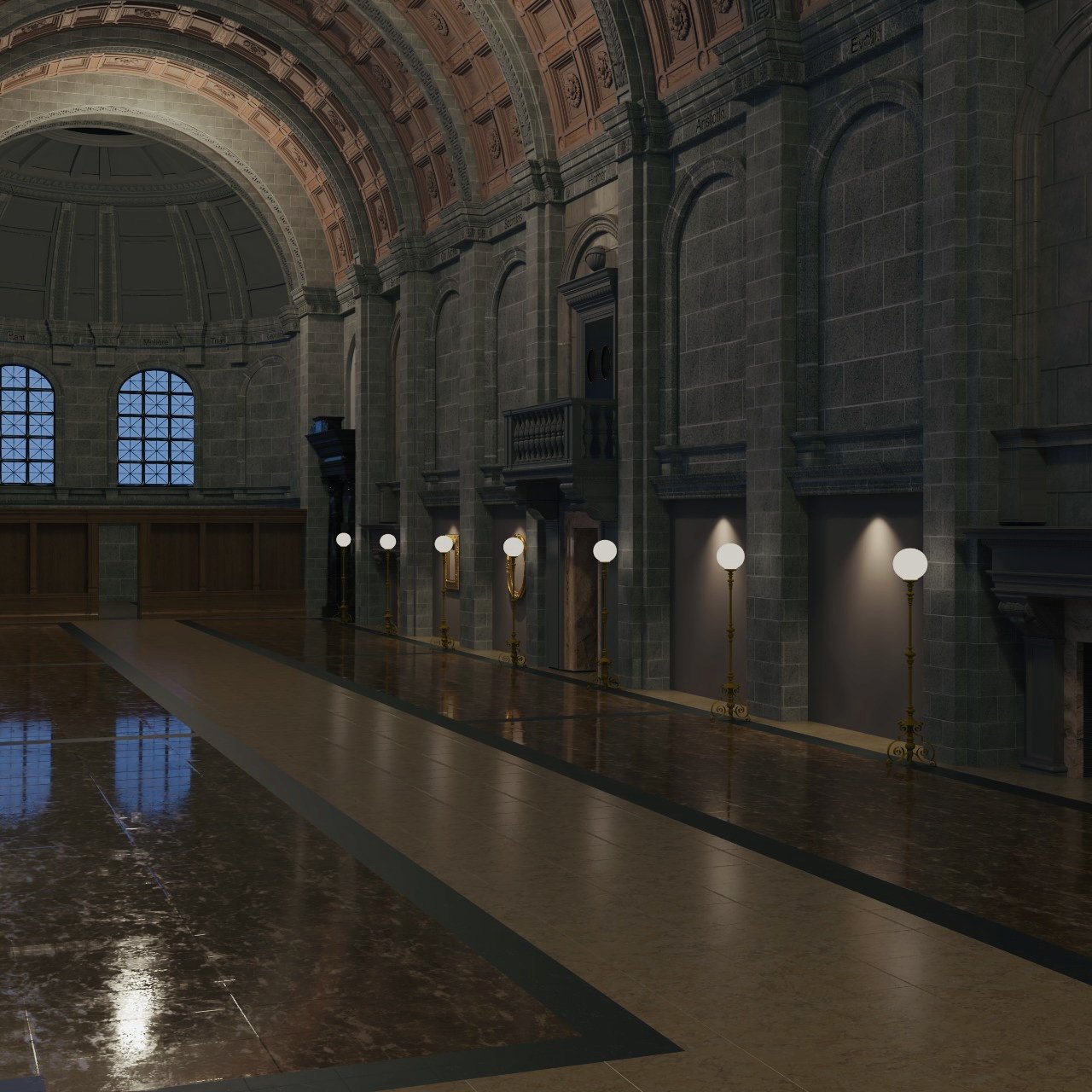
This exquisite picture frame encases one of Thomas Dewing's final landscape masterpieces, painted in Cornish. The harmonious blend of the painting and its frame can be appreciated in person at the Freer Gallery of Art, Smithsonian Institution in Washington, D.C. In this captivating painting titled "The Lute", several women are portrayed within a bountiful green surroundings. Yet, intriguingly, they do not seem to engage with one another, as each figure appears to be entranced by a musical performance. To the far right of the painting, a woman can be seen playing a unique instrument called the theorbo, a member of the lute family. Thomas Dewing was inspired to incorporate this instrument into his work after borrowing it from his friend, Stanford White.
Stanford White's innovative approach to picture frame design is evident in the intricate detailing and fine craftsmanship of this frame. The frame itself is adorned with a recurring arabesque motif (non-pierced) and is a testament to the creative genius of renowned designer Stanford White. White’s choice of the arabesque motif not only highlights the painting's subject matter but also adds a sense of cohesion and balance to the overall composition. With a keen eye for aesthetics, White's frame designs often served to elevate the artwork they surrounded, resulting in a truly harmonious marriage of form and function. LUTE 1904 frame presented here is inspired by this original design; however, the arabesque pattern is pierced allowing the light reflection to pass towards the observer yet allowing the shadows to be case on the back frame.
LUTE 1904



